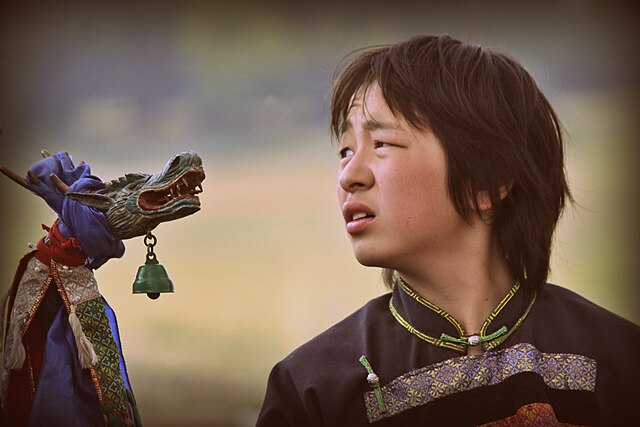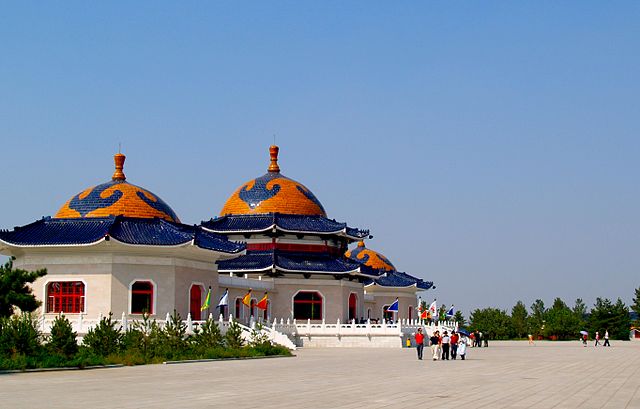Mongolian shamanism, more broadly called the Mongolian folk religion, or occasionally Tengerism, refers to the animistic and shamanic ethnic religion that has been practiced in Mongolia and its surrounding areas at least since the age of recorded history. In the earliest known stages it was intricately tied to all other aspects of social life and to the tribal organization of Mongolian society. Along the way, it has become influenced by and mingled with Buddhism. During the socialist years of the twentieth century, it was heavily repressed, but has since made a comeback.
Temple of the Sülde Tngri in the town of Uxin Banner in Inner Mongolia, China, in the Ordos Desert.
Main hall of the Shrine of the Lord Genghis Khan, in Ordos City, China.
Mongolian shamans just before ritual. 3 March 2019. Khovsgol lake, Mongolia.
A Buryat boy in a shamanic ritual.
Mausoleum of Genghis Khan
The Mausoleum of Genghis Khan is a mausoleum dedicated to Genghis Khan, where he is worshipped as ancestor, dynastic founder, and deity. The mausoleum is better called the Lord's Enclosure, the traditional name among the Mongols, as it has never truly contained the Khan's body. It is the main centre of the worship of Genghis Khan, a growing practice in the Mongolian shamanism of both Inner Mongolia, where the mausoleum is located, and Mongolia.
Main hall
In 1995
The tomb complex at the Genghis Khan Mausoleum Scenic Area in 2007
Outdoor sacrificial altar to heaven







